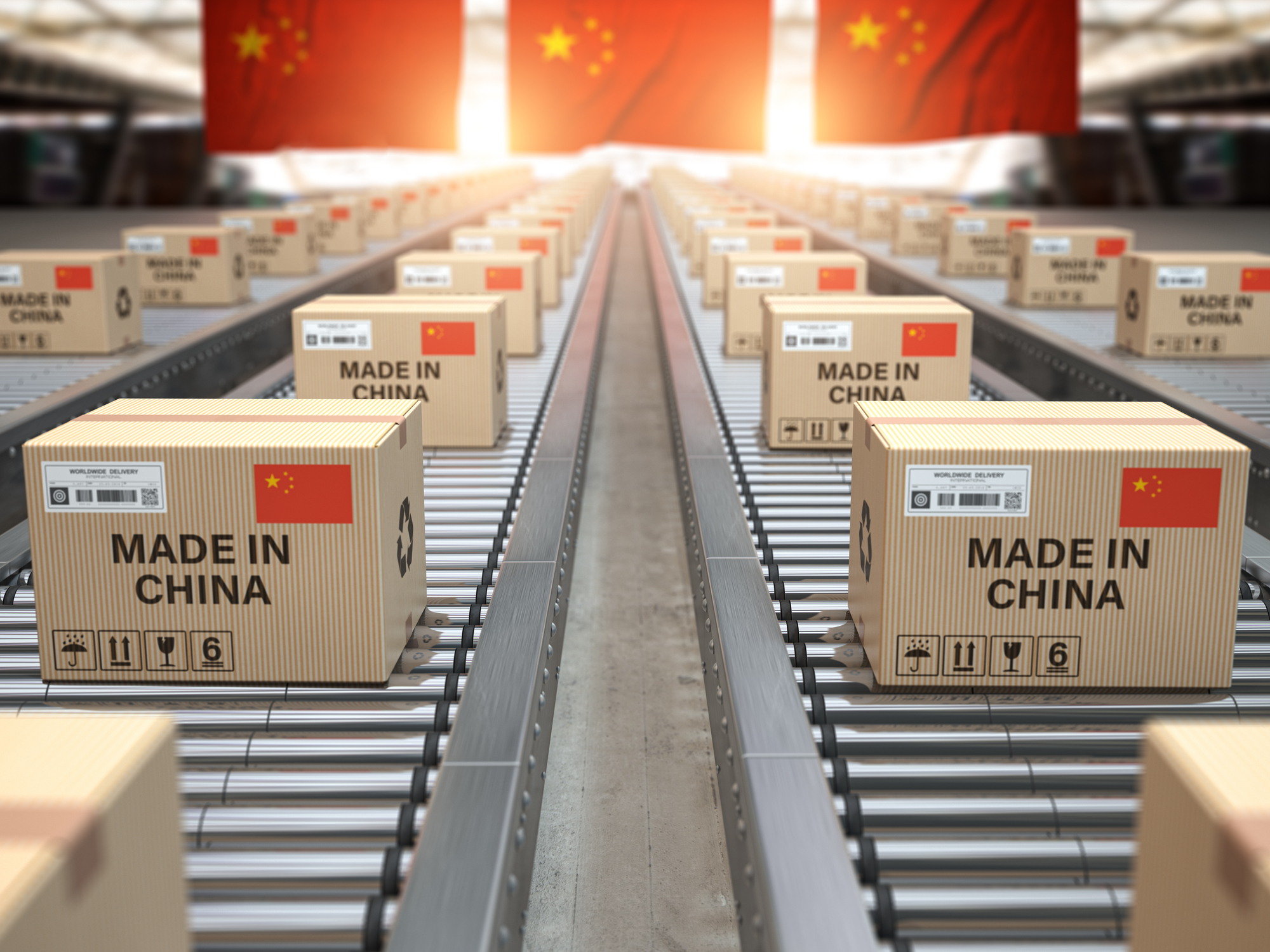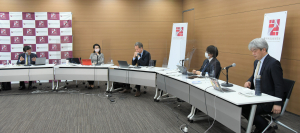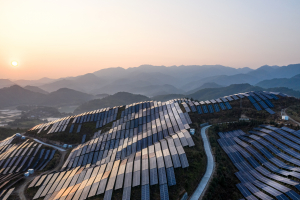
Made in China 2025 and the Role of Policy Experimentation
April 24, 2023
R-2022-116E
China’s ambitious strategy to become a manufacturing superpower has been seen as marking a shift to tighter central control. A closer look, though, reveals China grappling with regional differences in levels of development and a continued reliance on locally initiated policy experimentation.
Issues Revealed by MIC 2025
In 2015, China announced a new industrial policy called Made in China 2025 (MIC 2025) that has attracted great attention both domestically and internationally. It is a medium-term plan covering a wide range of topics, the most noteworthy being China’s ambitious goal to turn the country into “a leading high-end manufacturing superpower”[1] and achieve smart manufacturing by integrating informatization and industrialization.[2] The latter goal comes at a time when many developed countries are pursuing reindustrialization, as exemplified by Germany’s Industry 4.0 strategy.
MIC 2025 is the first phase of a three-step development strategy (sanbuzou, 三步走), the goals of which are to join the ranks of major manufacturing countries by 2025, rise to the middle of this group by 2035, and then emerge as the world’s preeminent manufacturing powerhouse by 2049—the 100th anniversary of the establishment of the People’s Republic of China. As many observers have noted, China is pursuing an ambitious goal, but a close reading of the text of MIC 2025 reveals a more complex perception of the current situation.
Part 1, titled “Development Trends and Environment,” notes that China is under pressure from “both sides” amid the ongoing structural transformation of the global manufacturing industry.[3] On one side, there is the pressure of the reindustrialization strategy that developed countries have embraced in the wake of the 2008 financial crisis. This highlights China’s weak capacity for innovation and high dependence on other countries for key technologies and high-end equipment. On the other side is the pressure of developing countries’ entry into the global division of labor. The traditional rough-and-ready development model can no longer be sustained in the face of China’s rising labor costs and a slowdown in investment and export growth.
There is a widely shared awareness in China of the problem it faces in achieving development from its current position as neither a developed nor a developing country. For example, in a 2015 article in the People’s Daily, former Minister of Industry and Information Technology Miao Wei compared MIC 2025 and Industry 4.0, pointing out that Germany had basically achieved Industry 2.0 (mass production) and Industry 3.0 (computerization and automation) and was working on Industry 4.0 (cyber-physical systems). In contrast, he noted, China faces the challenge of achieving Industry 2.0 to 4.0 all at once, due to the large disparities in development at the regional level.[4] In fact, MIC 2025–related policies tend to emphasize disparities in the stages of development among the different regions of the country. In 2016 the Ministry of Industry and Information Technology (MIIT) promulgated the Plan for the Integrated Development of Informatization and Industrialization (2016–20) on achieving smart manufacturing, which describes a goal of accelerating the formation of scientific methods, flexible mechanisms, and fine-tuned policies for enterprises, industries, and regions at different levels and stages of development.[5]
That same year, MIIT released the MIC 2025 Urban Pilot Model Work Plan, which stressed the need for systematic national building through pilot projects tailored to the different characteristics of the eastern, western, and northeastern regions of China.[6] The scope of MIC 2025 is not limited to the smart manufacturing and high-tech sectors, moreover. The Ministry of Education and the All-China Federation of Trade Unions, for instance, announced in 2016 the Plan for Improving the Education and Skills of Migrant Workers. This plan sets forth support for 1.5 million migrant workers from rural villages, providing educational opportunities to enhance the skills of those who have completed secondary education and offering appropriate livelihood support and language courses in standard Chinese, in addition to supporting lifelong learning.[7] In particular, it reportedly targets areas with a high concentration of migrant workers. Amid the enormous disparities, efforts are expected to focus on lifting people out of poverty and securing technical personnel through a bottom-up approach.
China is unable to pursue Industry 4.0 under conditions similar to those in developed countries nor to maintain competitiveness with the kind of export-oriented strategy it had used in the past. Given the large disparities among regions and industries, Beijing will need to formulate and implement policies to develop advanced, smart technologies while also adapting such policies to existing conditions in each region. Many have argued that the strength of China’s development has been its adaptability, which has allowed it to successfully meet the needs of various regions and individuals despite being an authoritarian regime lacking democratic institutions.[8] Below, I examine how China’s central and local governments are advancing MIC 2025 through the lens of policy experimentation, which has largely been undertaken at the initiative of local governments.
Experiment-Based Policy Making
Policy experimentation was a common feature during the period of “reform and opening up” in China, given the lack of reference points in gradually introducing elements of a market economy to all corners of the vast country. This, according to political scientist Sebastian Heilmann, was advanced through a pattern of “experimentation under hierarchy,”[9] where experiments were first conducted locally, with lessons learned being incorporated into the policies formulated and legislated at the national level. Heilmann notes that while traditional policy making starts with research and analysis and then proceeds to policy formulation and legislation before moving on to implementation, in China, innovative policies were first implemented by local governments, with the most successful examples being taken up as model cases in developing nationwide laws and regulations. Experimentation took place under local initiative, but the central government played an important role in the dissemination of best practices to other regions and in legislating at the national level. In this respect the experiments were conducted “under hierarchy.” Support from the central government helped to reduce risks for local governments, motivating officials to take action to resolve pressing local issues and, at the same time, to advance their careers. In this sense, Heilmann notes, distinguishing between bottom-up (“spontaneous”) and top-down (“mobilization-style”) initiatives is nearly meaningless since there is a strong element of both.
As a concrete example, Heilmann cites the 2007 enactment of the Enterprise Bankruptcy Law,[10] some 30 years after China introduced market economic reforms in 1978. Efforts to establish national bankruptcy regulation began in 1983 in the face of mounting debt at state-owned enterprises (SOEs). SOEs at the time provided many public goods and had considerable autonomy. China’s state sector was a policy domain that remained under the control of vested interests, though, with established actors seeking to allow only incremental change through local experimentation. Full-fledged SOE reform thus did not begin until after the 1997 Asian currency crisis, which highlighted debt as a serious problem. The accumulation of experience in policy experimentation at the local level significantly facilitated the task of assessing the risk of many subsequent reforms. In Heilmann’s view, SOE reform in China “was not implemented as a holistic, universal, and law-based policy package but rather was achieved through a policy-based ad hoc approach to solving the problems of individual enterprises at opportune points in time.” In the process of adopting the Enterprise Bankruptcy Law, many local experiments were conducted under the initiative of the central government, and the results were widely discussed in Beijing. The central government provided guidelines, goals, and priorities for bankruptcy regulation but left the task of devising innovative solutions to the local level. The Enterprise Bankruptcy Law was thus a product of a division of labor, with the central government setting the goals and evaluating progress and the local governments developing the means.
Opinion among researchers is split, though, when it comes to how governance structure relates to policy experimentation. Some, like Heilmann, focus on the hierarchical nature of the principal role played by Beijing, pointing out that policy experiments “emerged from competition between pro-market and conservative factions in Beijing”[11] or that “the central government . . . provided stronger incentives to sub-national governments, in order to encourage them to try out reforms and promote economic growth,” with heads of regions with higher growth being “more likely to be promoted.”[12] Other scholars highlight the bottom-up dynamism of the provinces, arguing that the “top-down means of control” has encouraged “selective policy implementation” and may have “actually increase[d] street-level discretion[13] or that there are “entrepreneurial” local policy makers who “will innovate irrespective of a centralization of bureaucratic power and interests.”[14] In either case, the arguments center around the interaction between the central and local governments.
As mentioned above, MIC 2025 is premised on China being neither a developed nor a developing country and there existing large disparities among regions. Given the uncertainty of reform and China’s history of pragmatic and gradualist policy experimentation, it would not be surprising for policy innovation under MIC 2025 to be driven by experiments that are based on regional realities. In the next section, I will show that policy experimentation indeed has a prominent place in MIC 2025 and outline how views of experimentation have evolved under Xi Jinping’s leadership.
Policy Experimentation and “Top-Level Design”
Using the Beida Fabao (北大法宝) database of official documents operated by Peking University, Heilmann estimated the number of national-level documents on economic reform that—based on their titles—dealt with policy experimentation.[15] During the first two decades of reform and opening up, the share of experimentation-related policies hovered around 30%. After 1997, the percentage fell to about 13%, as economic ministries carried out institutional reforms and China adjusted to global standards following its accession to the World Trade Organization. The share jumped back to over 20% in 2003 under the leadership of Hu Jintao and Wen Jiabao, who emphasized regional welfare, but has not risen above 10% since 2015, as local governments embraced the “top-level design” (dinceng sheji, 顶层设计) proposed by Xi Jinping, as discussed below.
Considering its usefulness in addressing uncertainty, though, policy experimentation may play varying roles from one region to another. Using the same Beida Fabao database, I calculated the percentage of official documents containing MIC 2025 in their text that also referred to “experimental points” (shidian, 试点, or pilot projects)—a typical framework for policy experimentation—and found the share to be 51.8% for national-level documents. Although my method of data collection may have differed from Heilmann’s, the result suggests that experimentation remains quite significant in the implementation of MIC 2025.
Number of MIC 2025–related Provincial- and City-Level Documents and Share Referring to Pilot Projects
|
|
Provincial level |
Refers to pilot project (%) |
City level |
Refers to pilot project (%) |
|
Anhui Province |
260 |
55.8 |
190 |
71.1 |
|
Fujian Province |
252 |
52.8 |
153 |
72.5 |
|
Zhejiang Province |
177 |
58.8 |
550 |
80.9 |
|
Hunan Province |
163 |
58.3 |
43 |
25.6 |
|
Shaanxi Province |
154 |
34.4 |
85 |
52.9 |
|
Shandong Province |
150 |
57.3 |
125 |
84.0 |
|
Jiangsu Province |
149 |
57.7 |
316 |
65.5 |
|
Henan Province |
128 |
60.9 |
233 |
78.1 |
|
Sichuan Province |
127 |
50.4 |
139 |
77.0 |
|
Hebei Province |
120 |
52.5 |
95 |
78.9 |
|
Hubei Province |
111 |
63.1 |
87 |
81.6 |
|
Gansu Province |
101 |
61.4 |
139 |
82.0 |
|
Shanghai Municipality |
90 |
70.0 |
– |
– |
|
Beijing Municipality |
89 |
50.6 |
– |
– |
|
Liaoning Province |
77 |
70.1 |
249 |
66.3 |
|
Qinghai Province |
76 |
47.4 |
24 |
91.7 |
|
Inner Mongolia Autonomous Region |
69 |
53.6 |
39 |
79.5 |
|
Jilin Province |
65 |
58.5 |
59 |
79.7 |
|
Tianjin Municipality |
64 |
70.3 |
– |
– |
|
Heilongjiang Province |
59 |
47.5 |
51 |
58.8 |
|
Jiangxi Province |
54 |
77.8 |
43 |
86.0 |
|
Guangxi Zhuang Autonomous Region |
51 |
66.7 |
120 |
62.5 |
|
Guangdong Province |
47 |
63.8 |
133 |
72.9 |
|
Chongqing Municipality |
45 |
42.2 |
2 |
50.0 |
|
Shanxi Province |
43 |
51.2 |
40 |
97.5 |
|
Yunnan Province |
35 |
37.1 |
55 |
78.2 |
|
Ningxia Hui Autonomous Region |
35 |
68.6 |
44 |
65.9 |
|
Guizhou Province |
32 |
71.9 |
40 |
72.5 |
|
Xinjiang Uygur Autonomous Region |
32 |
81.3 |
12 |
75.0 |
|
Hainan Province |
20 |
70.0 |
9 |
77.8 |
|
Tibet Autonomous Region |
9 |
11.1 |
4 |
75.0 |
Created by the author based on information on the Beida Fabao database of Peking University.
Table 1 shows the number of official documents relating to MIC 2025 issued by each province, direct-administered municipality (Beijing, Tianjin, Shanghai, and Chongqing), and autonomous region and the percentage of those documents referring to pilot projects. The data is presented for both provincial-level documents and those at the city level.
In most local administrations, the share of MIC 2025–related documents containing the term “pilot project” exceeded 50%, and in nearly all cases, the percentage was higher at the city level than at the provincial level. Overall, 56.6% of provincial-level documents relating to MIC 2025 referred to pilot projects. At the city level, the percentage was 73.8%. These numbers, considered along with the 51.8% at the national level, indicate that pilot projects tend to receive greater attention at lower levels of the administrative hierarchy.[16]
As indicated in the previous section, the policies adopted by provinces may differ depending on their respective levels of development. Here, based on the classification by Ma et al,[17] I will briefly review the MIC 2025 strategy in three provinces: Jiangsu along the eastern coast with advanced technology and a well-developed manufacturing sector; Liaoning in the northeast, a traditional industrial base with slowing manufacturing growth; and Gansu in the west, where development is lagging.
Jiangsu Province includes the cities of Suzhou, Nanjing, and Wuxi, where IT and high-tech manufacturing is growing rapidly. Following the announcement of MIC 2025, Jiangsu released its Made in China 2025 Jiangsu Action Plan in June 2015.[18] The document sets ambitious goals, such as increasing the number of tech companies to more than 10,000 by leveraging the province’s capacity for innovation and creativity, attaining a rate of 90 scientific and technical staff per 10,000 employees, and registering more than 87 development patents per million yuan of production value for manufacturers. The province also aims to build more than 1,000 smart factories as part of a broader effort to integrate manufacturing and information technology.
Jiangsu is promoting pilots in four areas: (1) platform construction for conventional, smart, and green manufacturing; (2) cloud services for information sharing on software, manufacturing resources, and standards; (3) high-value-added processing trade; and (4) higher foreign investment, especially in Suzhou.
One example of Nanjing’s response to the action plan is a pilot to establish a manufacturing model for innovation in industrial cloud services.[19] Jiangsu Province is focusing on some of the more ambitious goals for MIC 2025, such as developing high-end manufacturing equipment and promoting smart manufacturing.
Liaoning Province is home to several centers of traditional industry, including Shenyang and Dalian. Liaoning announced its Made in China 2025 Liaoning Province Action Plan in 2015, but this document was not available on the Beida Fabao database or the provincial government’s website. Manufacturing reform in northeast China is undoubtedly a focal point for the central government; in 2016, the Communist Party Central Committee and the State Council issued a joint report on the revitalization of old industrial bases in this region, stating that cities there will characterized by “one company, one industry” through industrial diversification in cooperation with the Jingjinji (京津冀) capital region centered on Beijing and Tianjin.[20] One of the measures aimed at achieving this goal is the “independent innovation demonstration zone,” which encourages pilot projects to transform urban industrial zones into areas for innovation and entrepreneurship.
The action plan released by the Liaoning city of Dalian, meanwhile, recognizes manufacturing as a traditional pillar industry but notes there are major development gaps in comparison with advanced regions in China and abroad.[21] It acknowledges that while many developed countries are advancing to Industry 4.0 from Industry 3.0, Dalian largely remains at the level of Industry 2.0, with just a few districts having attained Industry 3.0. The plan stresses the importance of universalizing Industry 2.0, upgrading to Industry 3.0, and pursuing Industry 4.0. It also announces that pilot projects will be conducted in the area of smart manufacturing—a component of Industry 4.0—in an effort to undertake trials before full implementation and taking easier steps before more difficult ones.
Gansu Province is located in the less-developed western, inland area and has published a relatively large number of documents related to MIC 2025. Its 2015 action plan makes only passing mention of smart manufacturing, focusing instead on upgrading the “five traditional industry clusters.”[22] Like Liaoning, it also discusses the establishment of “emerging industrial clusters” to encourage diversification, but whereas Liaoning has strengths in a limited number of industries, Gansu’s plan underscores the low productivity of even traditional industries. The implementation plan for the city of Wuwei, for instance, refers to a smart manufacturing pilot project to provide broadband internet access to rural areas.[23] This is suggestive of the gap between Gansu and provinces like Jiangsu and Liaoning, where such projects are focused on building smart factories.
The above overview reveals the regional diversity of MIC 2025 among the three provinces. It suggests that pilot projects are primarily being implemented in the smart manufacturing sector, where late-developing countries are at a disadvantage and face high risks. Policy experimentation may therefore be seen as an adaptive framework tailored to China’s current realities. It should be noted, however, that the nature of experiment-based policies has evolved considerably under Xi Jinping’s leadership since 2012.
The 18th National Congress of the Chinese Communist Party in 2012 introduced the concept of “top-level design,” which stresses unified leadership by the party center, presumably enabling it to make stricter demands on local governments. Yang and Yan point out that Xi Jinping issued this framework to deal with the major challenges that had been left unaddressed during the reform process, declining domestic and international conditions for reform, and genesis of vested interests as local governments and administrative divisions were given greater autonomy.[24]
While existing studies of policy experimentation generally see the central government setting the agendas and local governments devising specific measures, top-level design emphasizes the role of the center in both areas. In fact, many pilot projects have been placed under the guidance of the Central Leading Group for Comprehensively Deepening Reforms, headed by Xi Jinping.[25]
Top-level design does not deny the importance of policy experimentation per se. Nevertheless, Xi Jinping has stressed that all reform measures must be legitimized on the basis of law; he has stated that decisions of the State Council must be implemented without compromise and that no “creative practices” will be allowed.”[26] If, as Heilmann notes, practice precedes law in Chinese policy experimentation, then top-level design marks a major paradigm shift. Local officials must now make difficult decisions on the extent to which they choose to pursue their self-interests. The difficulty of interpreting central directives appears to have dampened enthusiasm for conducting policy experiments.[27]
As discussed above, policy experimentation appears to have retained its importance even under Made in China 2025. A more detailed analysis of case studies is needed, however, to determine how the unfolding central-local relationship is affecting individual projects. There are as yet few studies on how procedural changes in policy experimentation have affected policy outputs since Xi Jinping came to power. Such analyses could provide valuable lessons for Japan as well—despite differences in political systems—on achieving the optimum balance between top-down guidance and bottom-up experimentation.
[1] Glaser, Bonnie (2019), “Made in China 2025 and the Future of American Industry,” statement before the Senate Small Business and Entrepreneurship Committee, published by the Center for Strategic and International Studies, pp. 1–8, https://csis-website-prod.s3.amazonaws.com/s3fs-public/congressional_testimony/190226_Glaser_Testimony.pdf.
[2] 周济 (2015) 智能制造 “中国制造2025”的主攻方向, 《中国机械工程》, 26(17), pp. 2273–84. The relationship between Germany’s Industry 4.0, announced in 2011, and Made in China 2025 has been widely discussed, especially in China. However, the Ministry of Industry and Information Technology, the leading government agency for MIC 2025, has had the main goals of what would become MIC 2025 as part of its mission since its establishment in 2008. These include “integrating informatization and industrialization,” “combining the military and civilian sectors,” and “transforming industry from ‘big’ to ‘strong’.” 国务院办公厅, 《关于印发工业和信息化部主要职责内设机构和人员编制规定的通知》, July 11, 2008.
[3] 国务院, 关于印发《中国制造2025》的通知, May 8, 2015.
[4] 苗圩: 中国制造2025: 迈向制造强国之路, 《人民日报》, May 26, 2015.
[5] 工业信息化部, 关于印发信息化和工业化融合发展规划 (2016–2020年) 的通知, October 12, 2016.
[6] 工业信息化部办公厅, 关于印发《“中国制造2025”城市试点示范工作方案》的通知, February 2, 2016.
[7] 教育部, 中国全国总工会, 关于印发《农民工学历与能力提升行动计划—“求学圆梦行动” 实施方案》的通知, March 1, 2016.
[8] Andrew Nathan, “Authoritarian Resilience,” Journal of Democracy, 14(1), 2003, pp.6-17.
[9] Sebastian Heilmann, “Policy Experimentation in China’s Economic Rise,” Studies in Comparative International Development, 43, 2008, pp. 1–26.
[10] Sebastian Heilmann, “Experimentation under Hierarchy: Policy Experiments in the Reorganization of China’s State Sector, 1978–2008,” CID Working Paper Series, 17, 2008, pp. 1–19.
[11] Hongbin Cai and Daniel Treisman, “Did Government Decentralization Cause China’s Economic Miracle?” World Politics, 58(4), 2007, pp. 505–35.
[12] Chenggang Xu, “The Fundamental Institutions of China’s Reforms and Development,” Journal of Economic Literature, 49(4), 2011, pp. 1076–1151.
[13] Kevin O’Brien and Lianjiang Li, “Selective Policy Implementation in Rural China,” Comparative Politics, 31(2), 1999, pp. 167–86.
[14] Reza Hasmath, Jessica Teets, and Orion Lewis, “The Innovative Personality? Policy Making and Experimentation in an Authoritarian Bureaucracy,” Public Administration and Development, 39(3), 2019, pp. 154–62.
[15] Sebastian Heilmann, Red Swan: How Unorthodox Policy Making Facilitated China’s Rise, Chinese University Press, 2018.
[16] There are county- and township-level administrations below the city level, but data for these levels are not available in the Beida Fabao database.
[17] Ma Huimin et al., “Strategic Plan of ‘Made in China 2025’ and Its Implementation,” in Richard Brunet-Thornton and Felipe Martinez, eds., Analyzing the Impacts of Industry 4.0 in Modern Business Environments, IGI Global, 2018.
[18] 中共中央江苏省委员会, 江苏省人民政府, 关于印发〈中国制造2025江苏行动纲要〉的通知, June 3, 2015.
[19] 南京市人民政府, 关于印发《中国制造2025南京市实施方案 (2015–2017) 的通知》, July 16, 2015.
[20] 中共中央, 国务院, 关于全面振兴东北地区等老工业基地的若干意见, April 4, 2016.
[21] 大连市人民政府, 关于印发中国制造2025大连行动计划的通知, January 29, 2016.
[22] 甘肃省人民政府, 关于印发《中国制造2025甘肃行动纲要》的通知, November 2, 2015.
[23] 武威市人民政府, 关于印发中国制造2025武威市实施方案的通知, March 14, 2016.
[24] Xuedong Yang and Jian Yan, “Top-Level Design, Reform Pressures, and Local Adaptations: An Interpretation of the Trajectory of Reform since the 18th CPC Party Congress,” Journal of Chinese Governance, 3(1), 2018, pp. 25–48.
[25] Xi Jinping’s direct involvement in key policy areas through the Leading Group is noted as one attempt to recentralize power. See Roderick MacFarquhar, “Does Mao Still Matter?” in Jennifer Rudolph and Michael Szonyi, eds., The China Questions: Critical Insights into a Rising Power, Harvard University Press, 2018.
[26] Yang and Yan, “Top-Level Design.”
[27] Jessica Teets and Reza Hasmath, “The Evolution of Policy Experimentation in China,” Journal of Asian Public Policy, 13(1), 2020, pp. 49–59.















